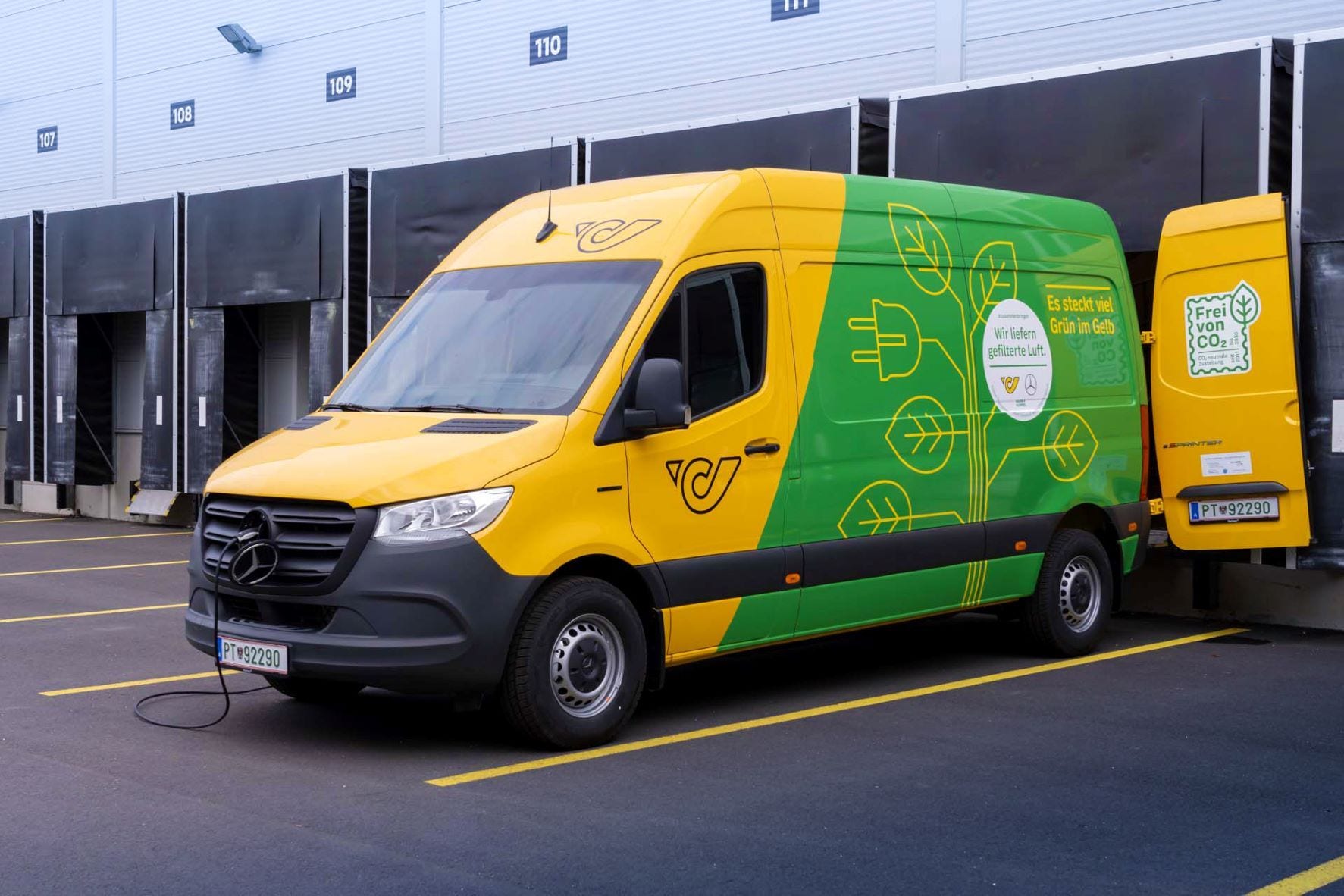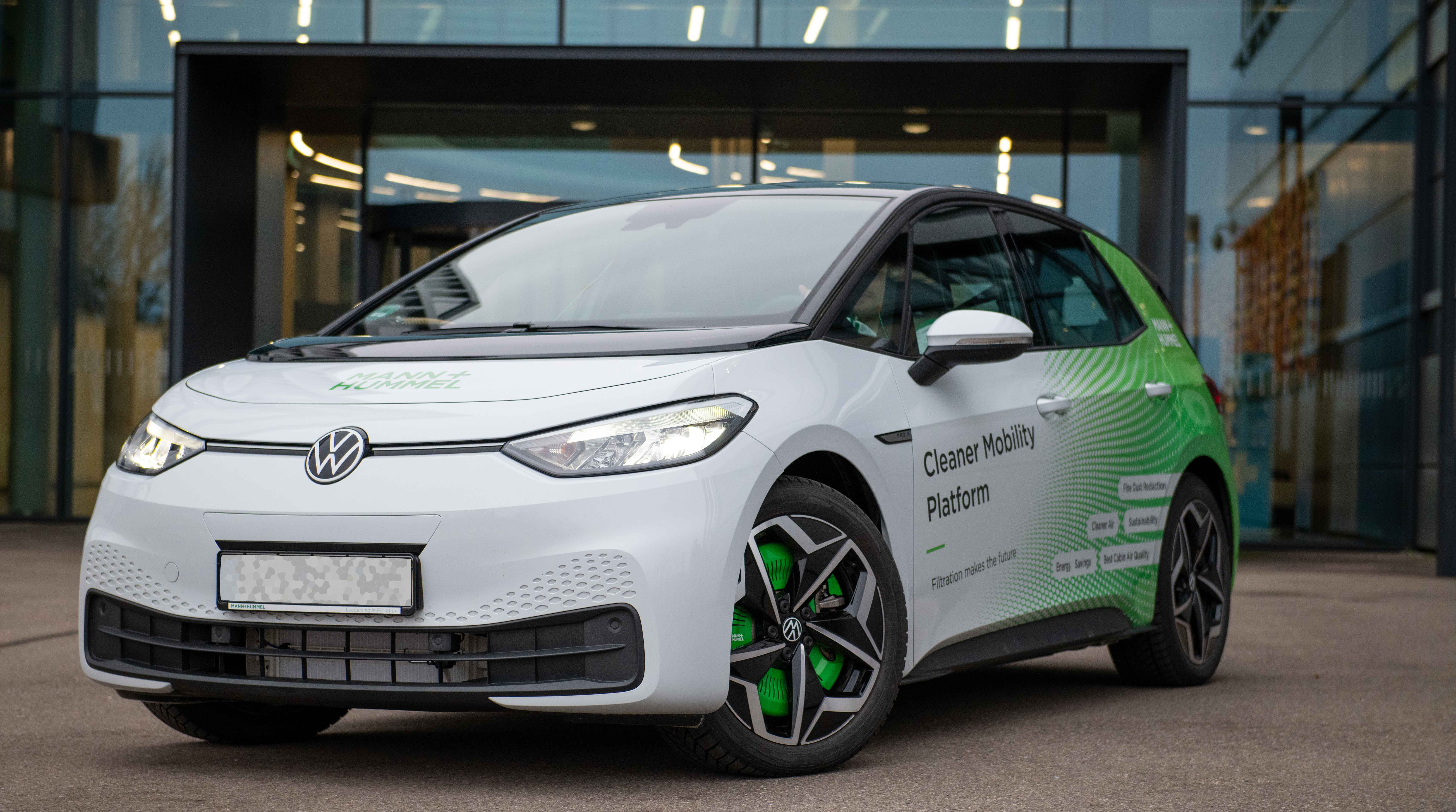Innovative Air Purification in Traffic
Convincing under real-life conditions: front-end filter systems from MANN+HUMMEL demonstrate how fine dust emissions can be efficiently compensated
Ludwigsburg, May 23, 2024 – Global air pollution is now considered the greatest environmental threat to human health. According to the World Health Organization (WHO), most of our planet's inhabitants are exposed to polluted air. This is particularly acute in cities, where the WHO guideline values, which were drastically lowered in 2021, are often permanently exceeded. Even low concentrations of particulate matter are enough to cause serious health problems, as especially the smallest particles can penetrate deep into the human body. Figures from the European Environment Agency (EEA) indicate that around 240,000 premature deaths in the EU alone were caused by particulate matter in 2020. A front-end filter system from Ludwigsburg-based filtration market leader MANN+HUMMEL can help to improve air quality by offsetting particulate emissions from traffic. Test results from real-life operation are more than promising.
Driving "vacuum cleaner"
The front-end filter installed in the unused area between the radiator and bumper reduces particulate emissions in the immediate vicinity of the vehicle, including tire, brake and road abrasion. In passive mode, the system cleans the air flowing into the filter element through the airstream. At low driving speeds, when charging the battery or when parking, the system switches to active mode: The fan already installed in the vehicle then draws ambient air into the system for filtering.
 Installation of the MANN+HUMMEL front-end filter
Installation of the MANN+HUMMEL front-end filter
High fine dust compensation
Initial tests in MANN+HUMMEL's Cleaner Mobility Platform – a small car converted into a technology carrier – have demonstrated impressively that emission-neutral driving without particulate pollution is possible. According to measurements, the front-end filter can compensate up to 100 percent of the fine dust particles emitted by the vehicle (up to a diameter of ten micrometers, or PM10), depending on air pollution and operation. At higher concentrations of particulate matter in the ambient air, the effectiveness of the filtration increases so that significantly larger quantities of particulate matter can be filtered in inner-city areas with poorer air quality.
MANN+HUMMEL filters in delivery vehicles
Long-term tests with front-end filters installed in Mercedes-Benz eSprinters deliver similarly positive results. In Graz for instance, two standard eSprinters of the Österreichische (Austrian) Post equipped with front-end fine dust filters from MANN+HUMMEL were on the road from August 2022 to November 2023 as part of a project scientifically supported by the Duisburg Institute for Energy and Environmental Technology (IUTA). Both vehicles together covered around 36,500 kilometers. On average, they each drove around 50 kilometers a day and delivered 160 parcels at around 100 stops. The aim of the study was to evaluate the innovative combination of last-mile delivery and air filtration in urban areas under everyday conditions. A particulate matter sensor therefore constantly measured the concentration of particulate matter in the air in order to calculate the filtration performance.
 Mercedes-Benz eSprinter with integrated front-end filter
Mercedes-Benz eSprinter with integrated front-end filter
Significant reduction in fine dust
In test operation, the filtration performance is determined on the basis of collected data, but also by analyzing the filter elements that can be easily replaced during regular servicing. Both approaches produce comparable figures that are almost completely in line with the developers' rather conservative calculations. For example, under the conditions of the field test in Graz, the front-end filter reduces fine dust emissions with a particle size of up to 10 micrometers (PM10) by 55 percent with the fan running continuously when stationary, when charging and when driving under 35 kilometers per hour.
Analyzing the composition of filtered fine dust
The composition of the filtered fine dust is determined by an automated SEM-EDX particle analysis (scanning electron microscope / energy dispersive X-ray spectroscopy), followed by a morpho-chemical classification. This technically complex process provides further valuable insights into the effectiveness of filtration solutions: 35 percent of filtered PM10 fine dust emissions can be attributed to direct vehicle emissions in the outside air, while road abrasion and swirled-up fine dust particles account for 61 percent.
Long-term testing successful
The tests under real conditions confirm the filtration performance, compensation potential and reliability of MANN+HUMMEL's front-end filter system. Last but not least, it is also very gratifying that the installed front-end filter has no discernible influence on heat management and charging time of the vehicles in test operation. Furthermore, the continuous operation of the fans has no disruptive effect on the range of the delivery operation in the pilot project. With the front-end filter system, MANN+HUMMEL is thus providing an important impetus for improving the quality of life in urban areas - and proving once again that clean mobility is not a vision of the future, but a technically feasible reality today.

